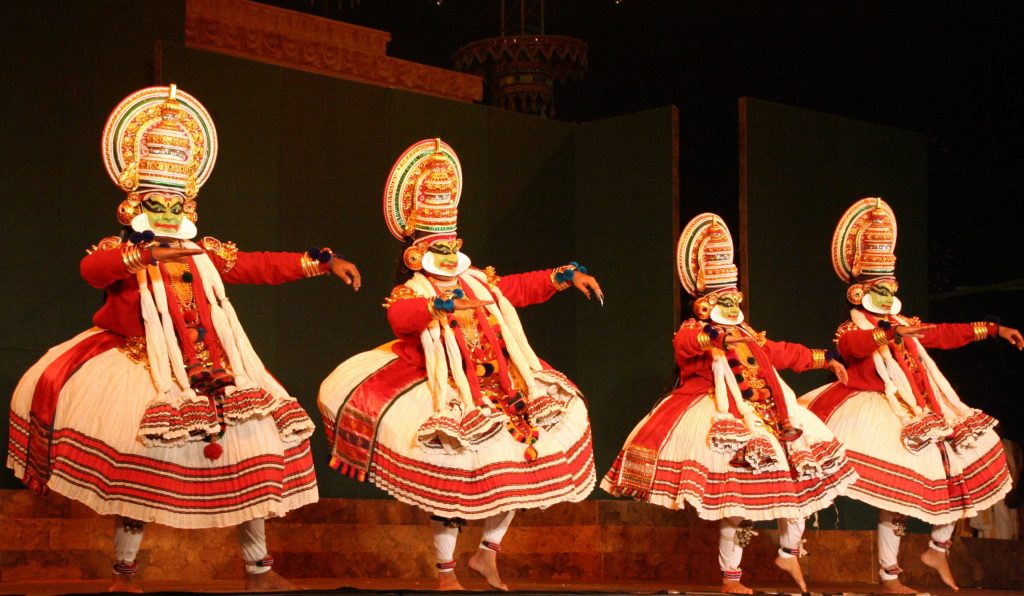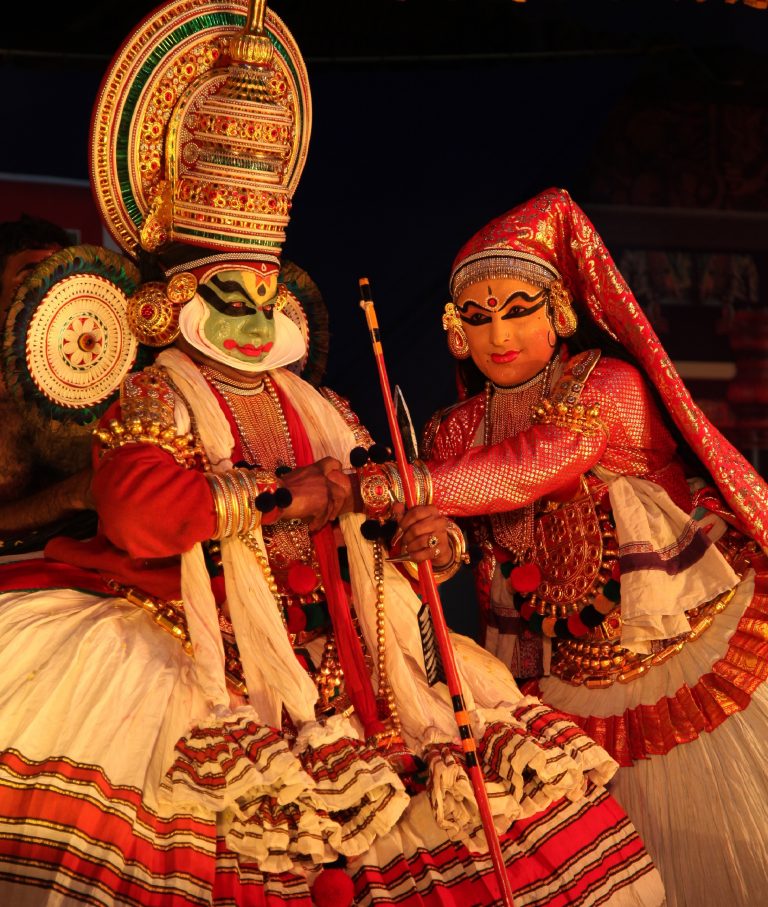Kathakali, the mesmerizing dance-drama of Kerala, is a visual and emotional spectacle that has enthralled audiences for centuries. This ancient art form, known for its intricate costumes, dramatic makeup, and powerful storytelling, is a jewel in India’s rich cultural heritage. In this article, we will immerse ourselves in the world of Kathakali, exploring its origins, distinctive features, and enduring impact on the world of performing arts.

Source: https://commons.wikimedia.org / Ramesh Lalwani

Source: https://commons.wikimedia.org / Davidjose365
A Glimpse into Kathakali’s Origins:
Kathakali traces its roots to the southern state of Kerala, India, and its name is derived from two Malayalam words: “Katha” (story) and “Kali” (performance). It originated in the 17th century as an art form that combined elements of dance, drama, music, and vibrant visual storytelling.
Distinctive Features of Kathakali:
- Elaborate Costumes and Makeup: One of the most striking aspects of Kathakali is the elaborate makeup and costumes worn by the performers. The characters are classified into four categories: Pacha (green), Kathi (knife), Kari (black), and Minukku (radiant), each with its own distinctive makeup and attire.
- Mudras and Gestures: Kathakali employs a complex system of hand gestures, known as mudras, to convey emotions, characters, and actions. These gestures are meticulously practiced and integral to the storytelling.
- Rhythmic Footwork: The dancers’ rhythmic footwork, often accompanied by vocal percussion (solkattu), adds depth and complexity to the performances.
- Vocal Music: The musical accompaniment includes powerful vocals, often delivered in the form of solos or duets, along with traditional instruments like chenda (drum), maddalam (barrel drum), and edakka (a drum with a narrow middle).
Themes and Stories:
Kathakali primarily draws from Indian epics like the Mahabharata, Ramayana, and other mythological tales. Performances vividly portray the triumph of good over evil, exploring complex characters and moral dilemmas.
Emotional Expression:
Kathakali is renowned for its ability to convey a wide range of emotions, from love and devotion to anger and vengeance. Performers use their facial expressions and body movements to create a deep connection with the audience.
Influence on the Performing Arts:
Kathakali’s influence can be seen in various forms of Indian and global performing arts. Elements of Kathakali, such as expressive facial movements and elaborate costumes, have found their way into contemporary dance and theater.
Preservation and Prominence:
Efforts have been made to preserve and promote Kathakali as a living art form. Training institutions and festivals dedicated to Kathakali play a vital role in ensuring its continued relevance.
Kathakali is not merely a dance-drama; it is a living testament to the power of storytelling through the arts. Its striking visuals, profound emotions, and intricate storytelling captivate audiences and transport them to a world of myth and legend. As Kathakali continues to thrive and evolve, it remains a vibrant and enduring jewel in India’s cultural crown, enchanting generations with its timeless tales and mesmerizing performances.

